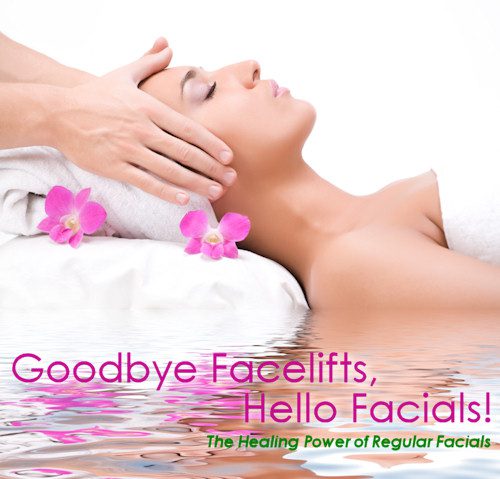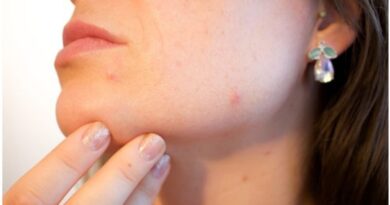Understanding Laser Skin Resurfacing Treatment
Individuals who intend to rejuvenate their skin tone and texture can undergo laser skin resurfacing, under the guidance of a highly-trained dermatologist. There are two lasers types available to patients; they include:
- Non-ablative
- Ablative
Non-ablative lasers are treatment lasers used to reduce wrinkles and spots without removing the skin layers. Dermatologists use these heat-generating lasers to promote collagen production, which helps to retain skin firmness and give the patient a younger look. They may use fractional lasers, pulsed-dye lasers, or pulsed light to carry out this treatment. Non-ablative laser treatments target skin conditions like rosacea and spider veins.

On the other hand, ablative lasers, like Erbium laser or carbon dioxide (CO2) lasers, treat various skin conditions. The former eradicates wrinkles and fine lines, whereas the latter treats deep wrinkles, warts, and scars.
A physician may recommend ablative or non-ablative laser procedures, depending on the skin condition.
Laser Skin Resurfacing Procedure
Individuals battling various skin conditions that are hard to treat with over-the-counter (OTC) skin care products can undergo laser skin resurfacing, including acne, age spots, scars, wrinkles, fine lines, saggy skin, warts, crow’s feet, and uneven skin tone. It is worth mentioning that this skin treatment is ideal for those with lighter skin tones. Such individuals are less prone to having hyperpigmentation. However, according to the American Board of Cosmetic Surgeons (ABCS), this statement is far-fetched and this procedure is ideal for other skin tones as well. Nevertheless, the key to successful laser skin resurfacing procedure is having a certified dermatologist that understands your skin type. Additionally, it is ideal to undergo this skin care treatment during winter or fall, as there is less exposure to sunlight.
Before commencing with laser skin resurfacing procedure, the physician will prepare the patient’s skin – a process that involves several treatments that will last weeks. This step helps to enhance the skin’s tolerance to the procedure and minimize adverse effects. Once it is time for the skin resurfacing procedure, the dermatologist numbs the skin area with a topical anaesthetic to minimize discomfort, especially if such treatment area is small. Otherwise, the patient may receive pain killers or sedative. The doctor then extracts unwanted substances from the skin, including bacteria and excess oil, before applying the laser device. Once the procedure is completed, the specialist applies wraps on the patient’s skin to protect it from contamination.
Some side effects to expect, including swelling, bumps, redness, burning, rash, hyperpigmentation, infection, and scars. The patient’s skin may experience redness and slight peeling. In such situations, using ice packs will relieve the discomfort and reduce inflammation. To improve recovery, the patient has to adhere to pre- and post-treatment guidelines recommended by the dermatologist; this helps to reduce complications from the procedure. Another area, the doctor look into will include the patient’s medical report, which contains history of skin and medical conditions. Individuals with such medical conditions should avoid taking acne medications. Drugs like Accutane can put the patient at risk of having scars from the procedure. Hence, before going through the skin care treatment, discuss all medical conditions with the dermatologist, including OTC drugs.
Post-Treatment Care
Individuals who intend to undergo laser skin resurfacing treatment are advised to quit smoking before and after the procedure, as it increases the risk of having side effects. On average, the patient may require three to ten days to recover fully – although, this depends on the size of the treatment and the severity of the skin condition. Some people may take longer time to recover than others (up to three weeks), especially those who undergo ablative laser treatment. During this period, these patients are to avoid strenuous activities that may hinder skin recovery, including exercising at the gym. They are also to stay away from areas with high risk of germs to prevent skin infection.
Sensitivity to sunlight may last up to a year. During this period, the patient must undergo several laser skin resurfacing procedure and also wear sunscreen when starting the day. Creams with SPF 30 can protect the skin from Ultra-Violet (UV) rays and skin damage. It is essential to reapply the product when needed, in order to stay protected round the clock – preferably, at least, twice daily. Additionally, moisturizers and skin cleansers help to improve recovery from the procedure. Solutions with vinegar or saline constituents work perfectly to keep the skin clean and healthy. As such, patients should have a robust skin care schedule to monitor their progress. However, before using any of these products, they are to consult their physicians. The post-treatment phase also requires changing new clothing consistently to stay fresh.
Selecting an Ideal Physician for Laser Skin Resurfacing
Having an experienced and certified physician is paramount to undergoing a successful laser skin resurfacing procedure. Avoid contacting the nearest dermatologist on a whim, without conducting proper research. There are specific areas to look out for when selecting the ideal skin care professional, including the following:
- The level of experience in treating patients using laser skin resurfacing.
- Portfolio to show successful track records of individuals treated with this procedure.
- Experience with specific skin tones and skin types and results.
- The possibility of an individual’s medical condition affecting the procedure, and any other factors to note.
- Expectation during and after laser skin resurfacing, and what to do.
- Number of sessions to expect before visible results.
Ideally, contacting a board-certified physician will improve the success rate of the laser skin resurfacing procedure – preferably one with either the American Society for Dermatologic Surgery or the American Board of Cosmetic Surgery (ABCS). Having the backing of these organizations imply that the professional has the experience and skill to carry out the procedure safely.
Laser Skin Resurfacing Treatment Cost It is worth mentioning that there is no medical insurance coverage for laser skin resurfacing treatment. Being a cosmetic procedure, patients are required to pay from their pockets. Laser types determine the cost of treatment. For Ablative treatments, such individuals may have to pay an average fee of $2,330 for each session. On the other hand, non-ablative treatments go for $1,031 a session. The total number of sessions and treatment area will determine the final cost. For example, if a patient has to undergo five treatment sessions using non-ablative procedures to achieve a desired result, the dermatologist may charge $5,155. Another factor worth noting is the doctor’s experience. Those with more training and skill tend to charge more per session than their counterparts.



